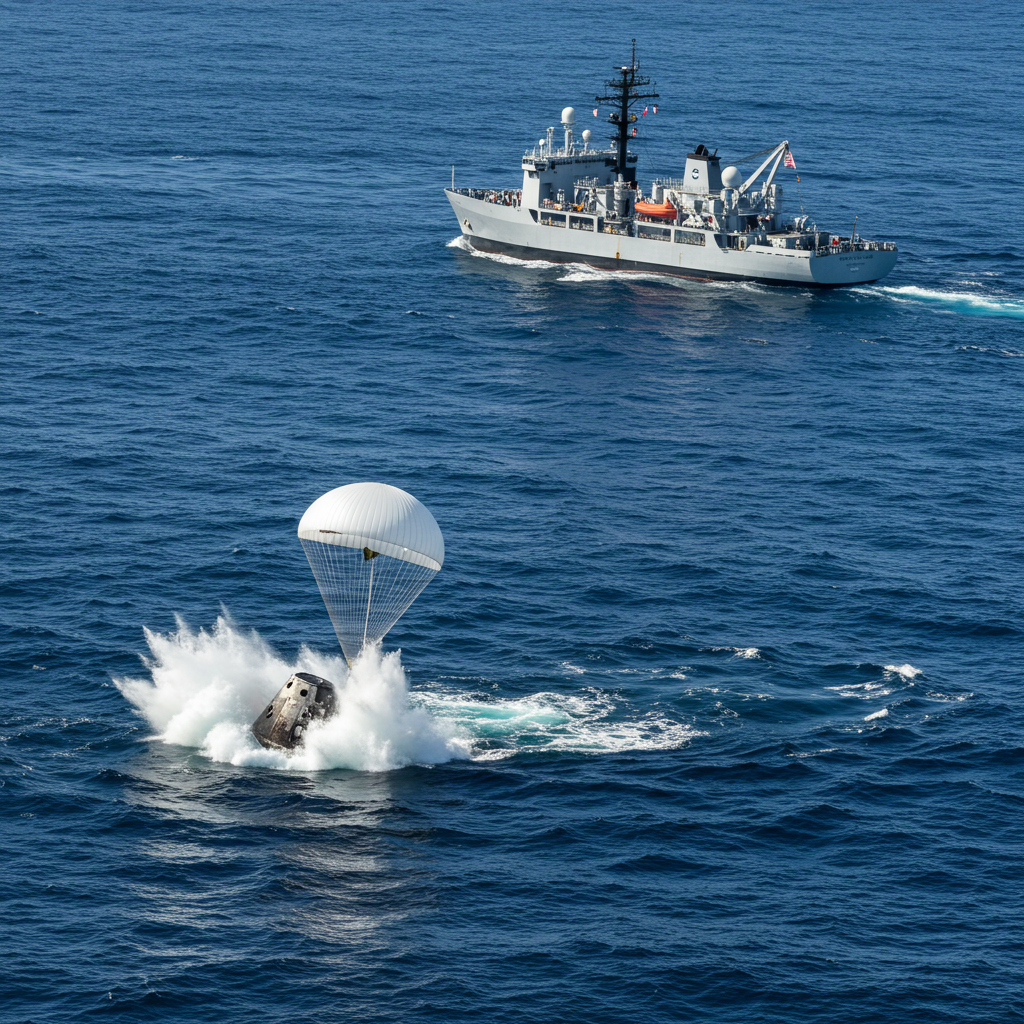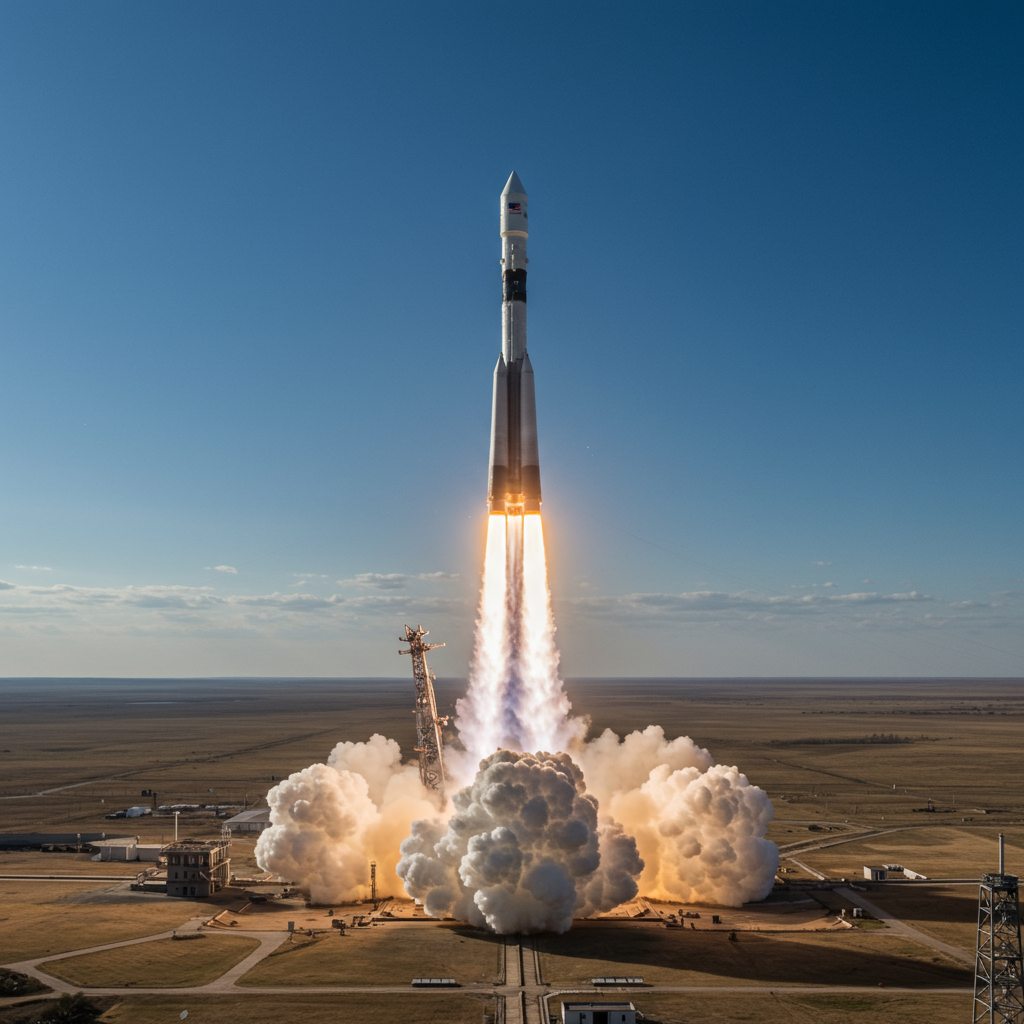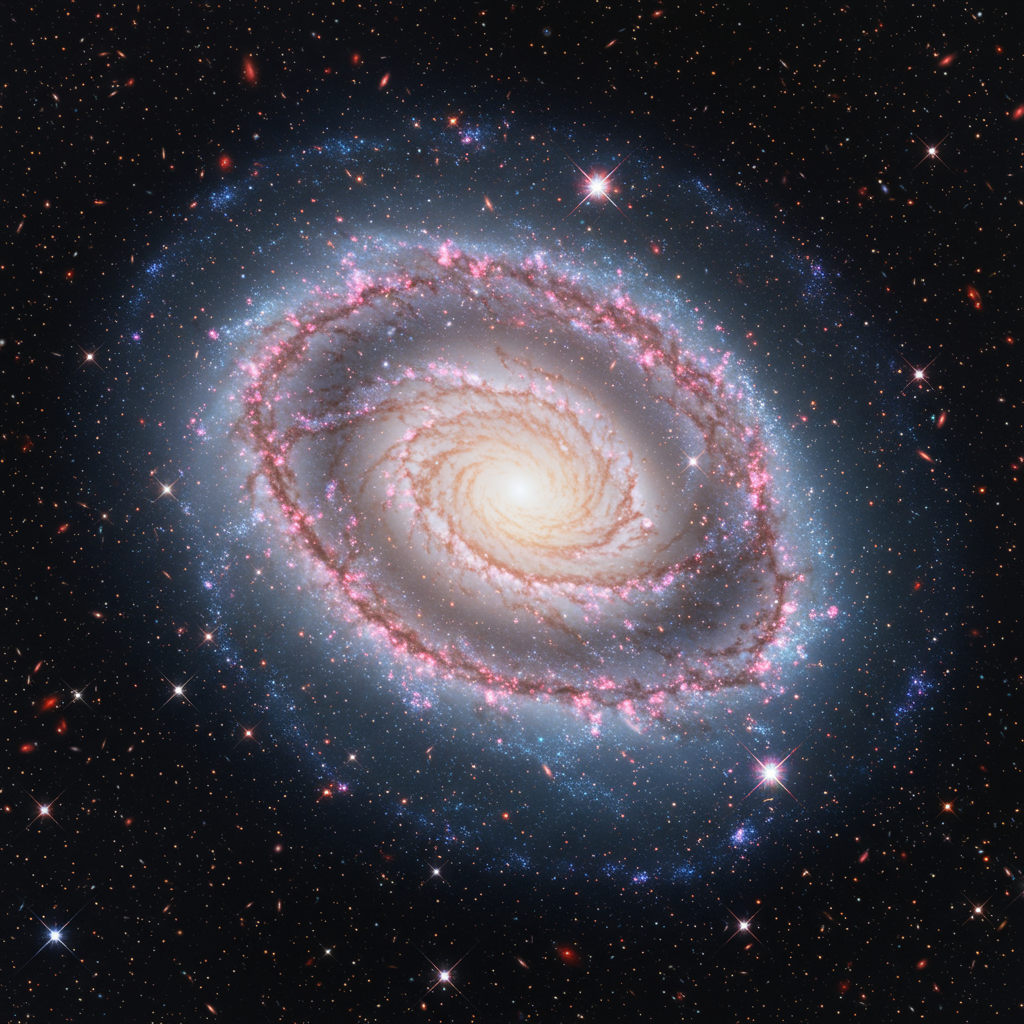The historic return of NASA’s SpaceX Crew-10 mission marked a pivotal moment for human spaceflight. After months aboard the International Space Station (ISS), four intrepid astronauts and cosmonauts successfully journeyed back to Earth. This mission culminated with a precise splashdown off the California coast, a significant first for NASA’s Commercial Crew Program. Their return delivered not just the crew, but also crucial, time-sensitive scientific research that promises to advance our understanding of life and science in space.
A Triumphant Return to Earth
The SpaceX Crew-10 mission completed its five-month science expedition with a meticulously planned undocking and splashdown. This highly anticipated event drew global attention. It showcased the precision and reliability of modern space travel. The journey home, while seemingly routine, is a complex dance of orbital mechanics and engineering prowess. It requires perfect timing and flawless execution.
The successful conclusion of this mission underscores the increasing capabilities of commercial space partners. These collaborations are vital for NASA’s ongoing exploration goals. They facilitate frequent access to the orbital laboratory. This continuous flow of crew and cargo supports groundbreaking research. It also maintains a continuous human presence in space.
The Crew of Courage and Collaboration
The four-person Crew-10 team represents the pinnacle of international cooperation in space. Each member brought unique expertise to their extended stay aboard the ISS. They dedicated themselves to a wide array of scientific endeavors.
The crew included:
Anne McClain (NASA astronaut): Commander of the mission.
Nichole Ayers (NASA astronaut): Pilot.
Takuya Onishi (JAXA astronaut): Mission specialist from the Japan Aerospace Exploration Agency.
Kirill Peskov (Roscosmos cosmonaut): Mission specialist from Russia’s Roscosmos.
For Anne McClain and Takuya Onishi, this marked their second visit to the International Space Station. Nichole Ayers and Kirill Peskov embarked on their first space station mission. Their combined experience and fresh perspectives contributed significantly to the mission’s success. Together, they navigated the challenges and triumphs of living and working in microgravity.
From Orbit to Ocean: The De-orbit Sequence
The journey home for the Crew-10 mission was a multi-stage process, meticulously managed by NASA and SpaceX teams. It began with the crew preparing their Dragon spacecraft for departure. This involved securing experiments and personal items.
On Friday, August 8, the hatch between the Dragon spacecraft and the International Space Station was closed. This critical step occurred around 4:20 p.m. EDT. Following hatch closure, live undocking coverage began at 5:45 p.m. EDT. The autonomous undocking from the ISS was targeted for 6:05 p.m. EDT. This marked the official start of their roughly 17-and-a-half-hour transit back to Earth.
Mission managers continuously monitored weather conditions in the recovery area. Factors like sea states, spacecraft readiness, and recovery team readiness are crucial. These elements dictate the final splashdown time and location. Such vigilance ensures the safest possible return for the crew.
The Final Descent and Splashdown
The dramatic conclusion of the Crew-10 mission unfolded on Saturday, August 9. Live coverage resumed at 10:15 a.m. EDT. Viewers could witness the critical phases of re-entry. The deorbit burn, a precisely timed firing of the Dragon’s engines, was scheduled for 10:39 a.m. EDT. This burn slowed the capsule down. It precisely adjusted its trajectory for atmospheric re-entry.
The deorbit burn is a complex maneuver. It precisely targets the splashdown zone. After the burn, the capsule began its fiery descent through Earth’s atmosphere. This process generates extreme heat. The Dragon’s heat shield protected the crew. Finally, the parachutes deployed. They slowed the capsule’s fall.
Splashdown was targeted for 11:33 a.m. EDT in the Pacific Ocean. Recovery teams were immediately on standby. They swiftly secured the capsule. They then assisted the crew in exiting the spacecraft. This swift recovery is vital for the crew’s health and safety after extended time in microgravity.
A West Coast First: Why California Matters
The Crew-10 splashdown marked a significant historical milestone. It was the first time a crewed flight under NASA’s Commercial Crew Program landed off the California coast. Previously, most Commercial Crew missions splashed down in the Atlantic Ocean or Gulf of Mexico, off the coast of Florida.
This expansion to a West Coast recovery zone is strategically important. It demonstrates enhanced operational flexibility for NASA and SpaceX. Having multiple recovery locations reduces mission risks. It allows for greater adaptability to weather conditions. If one recovery zone experiences unfavorable weather, another option is available. This adaptability increases the safety and reliability of crewed spaceflight. It also highlights the growing maturity of the Commercial Crew Program.
The ability to choose recovery sites based on real-time conditions ensures the highest probability of a safe and timely return. This logistical advancement benefits future missions. It also strengthens the overall architecture of American human space exploration efforts.
The Invaluable Scientific Cargo
Beyond the safe return of its human occupants, the Crew-10 mission brought back invaluable scientific research. Crew members spent five months conducting a diverse range of experiments on the ISS. Many of these experiments involved living organisms or time-sensitive samples.
Bringing these samples back to Earth quickly is crucial for their integrity. Researchers then analyze them in ground laboratories. This rapid return ensures the data remains viable and accurate. The scientific findings contribute to various fields. These include human health in space, materials science, and fundamental physics.
The work on the ISS is vital. It prepares humanity for deeper space missions, like those to the Moon and Mars. Insights from microgravity research inform countermeasures for astronaut health. They also guide the development of advanced life support systems. The knowledge gained from these experiments benefits life on Earth too. It often leads to breakthroughs in medicine, technology, and manufacturing.
Relive the Mission: Accessing Coverage and Insights
For those who missed the live events, NASA provided extensive coverage across multiple platforms. This allowed a wide audience to witness the undocking, re-entry, and splashdown. NASA continues to make replays and mission highlights available.
Live coverage streams were available on:
NASA+
Amazon Prime
NASA’s YouTube channel (for the post-landing teleconference)
Following the undocking coverage, NASA also provided audio-only discussions. These included conversations between the Crew-10, the space station, and flight controllers. This unique access offered a glimpse into the real-time operations of a complex space mission.
A “Return to Earth” media teleconference provided further insights. This event, streamed live on NASA’s YouTube channel, featured key participants:
Steve Stich, manager, NASA’s Commercial Crew Program
Dina Contella, deputy manager, NASA’s International Space Station Program
Sarah Walker, director, Dragon Mission Management, SpaceX
- Kazuyoshi Kawasaki, associate director general, JAXA’s Space Exploration Center/Space Exploration Innovation Hub Center
- www.nasa.gov
- www.nasa.gov
- www.space.com
- www.avionews.it
- www.miragenews.com
These experts shared details about the mission’s success and its broader implications. Their perspectives highlighted the immense effort and collaboration involved in human spaceflight.
The Future of Commercial Crew and Human Exploration
The successful completion of the Crew-10 mission reinforces the strength of NASA’s Commercial Crew Program. This program relies on private sector partners like SpaceX to transport astronauts to and from the International Space Station. It has proven to be a reliable and cost-effective method for space access. This frees up NASA resources for ambitious deep-space endeavors.
The Commercial Crew Program ensures the United States maintains independent human spaceflight capabilities. It fosters innovation and competition within the aerospace industry. This model is crucial as NASA looks towards its Artemis missions. These missions aim to return humans to the Moon and eventually send them to Mars. The Crew-10 mission, with its international crew and scientific objectives, is a testament to what global cooperation can achieve. It sets a strong precedent for future endeavors.
The International Space Station remains a vital outpost. It is a unique laboratory for research and a staging ground for future explorations. Missions like Crew-10 ensure its continued operation and scientific output. The lessons learned from extended stays in orbit and the precision of re-entry operations are invaluable. They pave the way for humanity’s next giant leaps into the cosmos.
Frequently Asked Questions
What was the primary goal of the Crew-10 mission?
The primary goal of the Crew-10 mission was to transport a four-person international crew to the International Space Station (ISS) for a five-month science expedition. During their time in orbit, the crew conducted numerous scientific experiments across various disciplines. Upon their return, a critical objective was to bring back time-sensitive research and samples to Earth for immediate analysis, contributing vital data to human health, materials science, and fundamental physics research.
Where can I find replays or highlights of the Crew-10 splashdown?
NASA provided comprehensive live coverage of the Crew-10 mission’s return, including undocking, deorbit burn, and splashdown. Replays and highlights of these events are typically available on NASA’s official streaming platforms, including NASA+ and Amazon Prime. Additionally, the post-landing media teleconference, featuring key mission managers and international partners, was streamed live on NASA’s YouTube channel, where it should remain available for viewing. Check the official NASA Commercial Crew Program blog and website for direct links to archived footage.
Why was this Crew-10 splashdown off California significant?
The Crew-10 splashdown was significant because it marked the first time a crewed mission under NASA’s Commercial Crew Program completed its landing off the coast of California. Historically, most previous Commercial Crew missions splashed down in the Atlantic Ocean or the Gulf of Mexico, near Florida. Utilizing a West Coast recovery zone demonstrates enhanced operational flexibility and redundancy for NASA and SpaceX. This capability allows mission managers to choose the safest and most optimal recovery site based on real-time weather conditions, significantly reducing risks and increasing the reliability of crewed spaceflight returns.
Conclusion
The successful return of NASA’s SpaceX Crew-10 mission, culminating in a historic California splashdown, highlights a new era in human spaceflight. This mission not only safely brought back its international crew but also delivered crucial scientific discoveries from the International Space Station. The seamless collaboration between NASA and SpaceX, coupled with the strategic expansion of recovery capabilities, sets a powerful precedent. It underscores the reliability and increasing sophistication of commercial space travel. As we look to the future, the lessons and triumphs of Crew-10 will undoubtedly inspire and enable humanity’s next ambitious steps in exploring the cosmos, fostering innovation and global partnership along the way.




